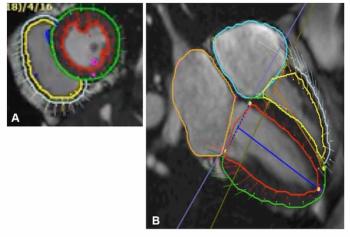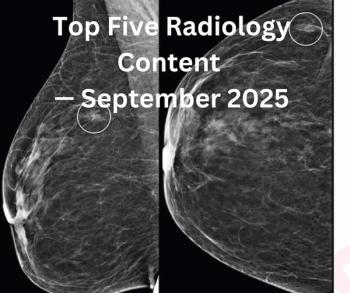
Cardiologists' self-referral drives up imaging costs
As Medicare passes through the congressional mill, the focus often turns to radiologists and the increasing cost of medical imaging. A recent report by Blue Cross/Blue Shield stated that radiologists are driving up healthcare costs. But Philadelphia researchers on Monday concluded that it is cardiologists -- not radiologists -- who are responsible for sharp hikes in dollars spent for medical imaging.
As Medicare passes through the congressional mill, the focus often turns to radiologists and the increasing cost of medical imaging. A recent report by Blue Cross/Blue Shield stated that radiologists are driving up healthcare costs. But Philadelphia researchers on Monday concluded that it is cardiologists -- not radiologists -- who are responsible for sharp hikes in dollars spent for medical imaging.
Overall, payments for noninvasive diagnostic imaging rose 71% from 1993 to 2001. Cardiologists' share of those Medicare dollars increased almost twice as rapidly as that of radiologists. And payments to cardiologists in offices and private imaging centers grew markedly, with a 240% increase, said Dr. Vijay Rao, radiology chair at Thomas Jefferson University Hospital.
Rao and colleagues at Jefferson, along with Jonathan Sunshine, Ph.D., of the American College of Radiology, analyzed Medicare part B data from 1993 to 2001. They focused on physician reimbursements for all noninvasive diagnostic imaging CPT-4 codes in the 70,000 and 90,000 series.
Physicians were grouped into nine categories: radiologists; cardiologists; chiropractors/podiatrists/optometrists; hospital-based specialists other than radiologists; internal medicine subspecialists other than cardiologists; neurologists, obstetricians/gynecologists, emergency physicians, and other miscellaneous specialists; primary-care physicians (including general internists); surgeons; and nonphysician practitioners.
Overall reimbursements for the eight-year period rose from $3.5 billion to $6 billion, representing a 70.6% increase. Radiologists' share increased by 58.4%, while cardiologists' portion jumped by 126.5%. For primary-care physicians, the increase was 41.6%; surgeons rose by 58.6%; and the other groups together increased by 80%. Although the last figure seems high, the total dollar amount was small, Rao said.
Broken down by location, payments for radiologists, cardiologists, and other nonradiologists in the hospital inpatient and outpatient setting were generally similar. The sharpest difference appeared in offices and private imaging centers. While radiologists enjoyed a 105% increase in this setting, cardiologists' payments jumped by 240%. Payments to other nonradiologists in the office setting increased by 67%.
The raw numbers behind these percentages show that payments for imaging hospital inpatients remained fairly stable, increasing 0.3% from 1993 to 2001. Payments for hospital outpatient imaging increased by 34%, with a total figure just under $1 billion in 2001. Payments in offices and private imaging centers totaled nearly $4 billion in 2001, a 120% increase, the largest share of which was for cardiologists.
"The trends shown by our study call for closer scrutiny of practices in private imaging centers and offices, especially when you look at the potential for self-referred studies done by cardiologists," Rao said.
Newsletter
Stay at the forefront of radiology with the Diagnostic Imaging newsletter, delivering the latest news, clinical insights, and imaging advancements for today’s radiologists.


























